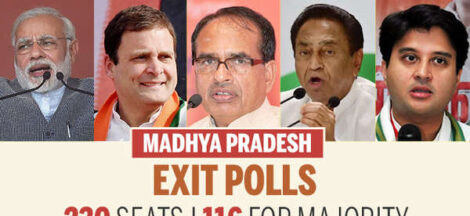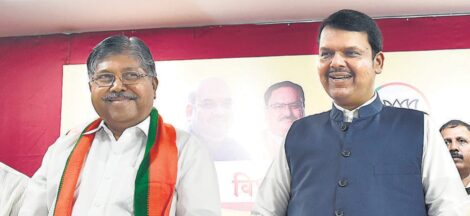By B. Sivaraman
How do you rate a report released in August 2018 by an authoritative UN agency like ILO exclusively on the wage scenario in India that makes no scrutiny of the Code of Wages, 2017 that was tabled in parliament in August 2017 itself and on which the country has been debating for the past one year?
And what to make of a 2018 report limiting itself only to the dated 2011–12 data and falsely blaming India for not collecting labour-related data on a regular basis? If the ILO report relies solely on 2011–12 NSSO aggregate wage data and ignores Indian Labour Statistics 2015, a compendium that extensively covers wage data for all major branches of industry upto 2014, and the Annual Survey of Industries data upto 2015–16, the Rural Labour Enquiry reports giving wage data for agricultural and rural non-farm labour upto 2015–16 and the annual data on minimum wages and the data for trade unions, industrial disputes and collective bargaining etc. upto 2014 available on the official site of Labour Bureau under the Ministry of Labour and Employment, then whose fault is that? Anyway, our point stops at the 2012–12 data, which makes this report more of an academic exercise and weakens its overall advocacy character.
The ILO report estimates that the real average daily wages in India almost doubled between 1993–94 and 2011–12 but fails to mention that the Indian GDP quadrupled between 1991 and 2011. The report rightly highlights that average daily wages in urban areas remain more than twice as high as wages in rural areas but unfortunately, as it stops at 2011–12, it is not able to capture the trend that ever since Modi took over as Prime Minister in 2014 there has been no growth in agricultural and rural wages as brought out by an RBI working paper by Sujata Kundu dated 25 April 2018.
The ILO report subtitled ‘Wage policies for decent work and inclusive growth’ shows that low pay and wage inequality remain serious challenges to India’s path of achieving decent working conditions and inclusive growth. Turning to wage inequality, the report points out that the all-pervasive gender wage gap still remains very high by international standards, although it declined from 48% in 1993–94 to 34% in 2011–12. But it fails to analyse to what extent this is the reason for a sharp reduction in the work participation rates among women. Instead of joining the workforce in greater numbers as the Indian economy grew from $284.3 billion to $1.8 trillion and per capita income grew from $340 to $1,480, women’s participation in the labour force fell from 47% to 37% over a 20-year period ending 2011–12. If the ILO too had recommended enactment of an anti-discrimination Act as recommended by Justice Ranganath Mishra Commission in 2007, and if the courts start ordering payment of back wages to cover the unpaid wage gap for women workers after its enactment as they did in the case of Minimum Wages Act, the gender wage gap would vanish in no time!
While tracking wage inequality the report rightly says, “… out of 195 million wage earners, 62 per cent (i.e., 121 million) were employed as casual workers. Employment in the organized sector has grown, but even in this sector many jobs have been casual or informal”. A 2011 TempLease survey puts the figure of temps in the organised sector at 90 million and the Modi government now seeks to amend the Contract Labour Act to legalise temp workers, but the report makes no mention of this.
The report goes on to underline the need to strengthen collective bargaining to bring down such inequality. But it stops short of naming the real culprits. Every big name in auto industry in India —Toyota, Honda, Suzuki, Tata Motors, Bajaj Auto, Hyundai —has witnessed workers’ agitations in the last few years because they refused to allow unionisation or declined to enter into collective bargaining when the workers sought to end the two-tier wages for two categories of workers — regular workers comprising 20–30% of the labour force getting a wage of Rs. 25,000 to 30,000 per month and casual or temp workers paid in the range of Rs. 5,000 to 8,000 constituting the remaining 70–80% of the workers. In the unorganised sector also, it makes no mention of the upsurge of Bangalore garment workers.
Stressing minimum wage is the key for a decent wage regime, the ILO report laments that the complexities in fixing minimum wages have “resulted in an estimated 1,709 different rates across the country, at times set somewhat arbitrarily, without full consultation with social partners, revised only about every five years, and applicable to an estimated 66 per cent of wage workers (those working in scheduled’ employment)” and recommends an all-India floor wage as the only way out. But it miserably fails to elaborate on the arbitrariness in fixing minimum wage, and proposing some standardisation of norms. Despite the 15th session of the Indian Labour Conference laying down detailed norms for fixing need-based minimum wage and a 1991 Supreme Court judgment further expanding them, with a recent Delhi HC judgment reaffirming National Institute of Nutrition prescription of 2,700 calories as basis for arriving at minimum wage, the ILO report fails to highlight these or avoids proposing its own norms.
The ILO report recommends government facilitating the shift to higher skills and productivity growth instead of stressing on tax and other fiscal incentives to labour-intensive industrialisation for employment generation to overcome the crisis of jobless growth and huge unemployment backlog and without even making a mention of automation potentially threatening 69% of the existing Indian jobs as underlined by World Bank’s WDR2016 report.
One can only hope that future reports in this India wage report series would overcome such gaps and glitches. (IPA Service)
The post ILO’S India Wage Report: Some Hits, Many Misses appeared first on Newspack by India Press Agency.


